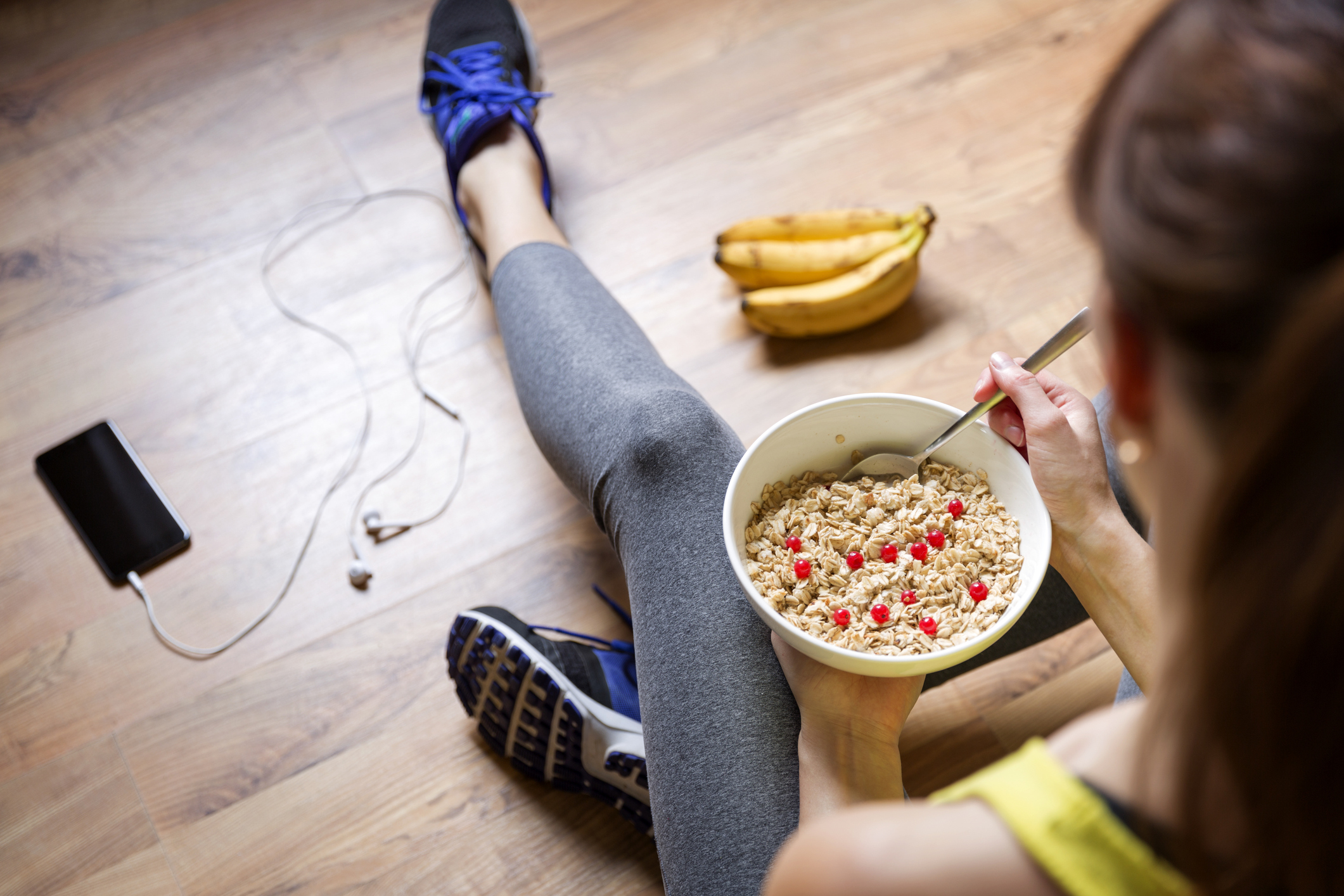For years, we’ve been told breakfast is the most important meal of the day, providing the energy you need to power through the morning’s tasks – so it seems particularly counter-intuitive, not to mention miserable, to skip it on a day when you’re heading to the gym.
But fasting has been one of the most talked-about diet and nutrition trends over the past year, thanks in part to the rise of intermittent fasting (IF) – the theory that suggests you can shed weight by switching between periods of eating and going without.
Now, a new school of thought suggests it’s not just your waistline that could benefit from eating at strategic times, with some experts claiming that training on an empty stomach could also help to enhance your gym performance.
The idea is simple: Skip the overnight oats and hit the treadmill on an empty stomach. But does it work, is it safe, and should you try it? We put it to four personal trainers to explain…
What’s the science behind it?
First thing’s first: Fasted training doesn’t mean starving for hours – it’s a training strategy where you eat carbohydrates, your body’s preferred fuel source, after training rather than before.
While some fasting fans say you shouldn’t eat anything before a workout, others treat the method more liberally, claiming that the only nutrient you need to avoid in order to technically remain in a fasted state is carbohydrates.
This means you can still enjoy a high-protein breakfast, such as eggs and avocado, which will help with muscle recovery too.

“The intention behind training first thing in the morning on an empty stomach is to try and use your body’s fat stores for energy, instead of utilising the energy from a pre-workout meal,” says Loui Fazakerley, an elite personal trainer from Third Space.
“Around six hours after eating, our bodies enter what is called a fasted state,” adds Gary Lockwood, personal trainer and CEO of 24/7 Fitness.
When you start to workout in this fasted state, the body scrambles to burn fat as a secondary fuel source. “It burns off all stored sugar and starts breaking down fat stores and converting them into ketone bodies for fuel instead,” Lockwood adds.
One important thing to note is that fasting before training doesn’t mean pulling the plug on your water intake. Hydration is still really important – so water or a low-calorie electrolyte drink should always be consumed before and during a fasted training session.
Are there any benefits?
Exercising on an empty stomach has been shown to be especially good for fat loss, and some studies have found that people who regularly train this way become better, over time, at burning fat at higher levels of intensity.
The 2012 book The Art And Science Of Low-Carbohydrate Performance, by Jeff S. Volek and Stephen D. Phinney (Beyond Obesity LLC), looked closely at the relationship between eating a lower-carb diet and burning body fat. It found that participants who restricted their carb intake to just 50g per day became better at burning fat in the long term.
“When it comes to fasted training, there are the obvious benefits of fat burning and weight loss, but it can also improve endurance during exercise too,” says Lockwood.
By training your body to switch quickly between burning carbohydrates and fat, he believes it can enhance your performance on a long marathon run, for example.
“Fasted training can be very beneficial to endurance athletes who are prone to hitting a wall when they burn through their sugar stores,” says Lockwood. “Training in this way removes the need to top up with sugary supplements during an event.
“Our bodies were never designed to eat as regularly [as we] do and the amount of calories that we do, so fasting returns your system to a more natural state of being. Many studies have shown it helps with in insulin resistance and can even improve cognitive function,” he adds.

Are there any downsides?
In some cases, burning fat for energy isn’t necessarily a good thing.
Your body burns fat most efficiently at 60% of your maximum effort – such as on a light jog – but when you pick up the intensity, it needs an energy source that it can burn more quickly.
Because the body isn’t able to burn fat at the same rate that it oxidises carbohydrates, most trainers will advise against skipping breakfast before a competitive sport or when attempting to achieve a personal best.

“Fasted workouts will feel tougher,” says Ant Nyman, a personal trainer from Antics Fitness (anticsfitness.com). “If your main goal from a session is optimal sporting performance or strength, you’re going to want to enter that session with replenished muscle glycogen levels. With this in mind, training in a fasted state would not be a good idea.”
So should you do it?
Fasted cardio can be beneficial in order to burn fat and increase the metabolism of fat, but if you’re performing high-intensity exercise, it’s better to use carbs as your main energy source.
If you’re looking to give the strategy a try, alternate between training in a fasted state on your low-intensity days, and consuming carbs before harder workouts, to condition your body to switch between using fat or carbs as its fuel.
“It’s important to make sure you get enough calories, proteins, carbs and fats in your diet every day to support your goal, whether that is to lose fat, maintain weight, or bulk up – but being clever with the timings of these calories can determine what your body burns for energy,” says Nyman.
“My early morning clients, 6.30-9.30 am, nearly always come to the gym having only had a coffee, so by default they train fasted anyway,” says personal trainer, Harry Jameson.
“On sessions where I know we’re going for a big strength day or will be doing some harder intervals, I get them to fuel at least 60 minutes before we start. That’s normally a shake for the really early guys.
“I’m a big believer in this type of training, given the correct structure,” Jameson continues. “For example, if I’m trying to get leaner, I’ll do three to four fasted cardio sessions a week, but in addition to the rest of my training.”
Jameson says fasted cardio should be kept “sub-maximal” and last around 40 minutes in duration: “This means jogging or cycling for me normally.”
Lockwood, meanwhile, adds: “I recommend it to all of my clients. I have great results combining the ketogenic diet with extended fasting – 24 hours, once a week – and fasted exercise.
“As always though, I would recommend discussing any change in dietary habits and exercise with your doctor,” he advises. “There is not a one-size-fits-all solution to either diet or exercise, and you need to work with your own unique physiology.
“I’ve learned what does and doesn’t work for me through 25 years of experimentation, trial and error.”





